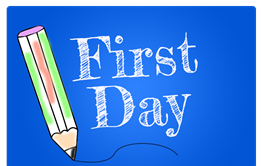Here are some fun games to help your new class get to know each other and learn their classmates’ names.
Bingo Was His Name
Procedure:
1. Print out a Bingo Board for each student (page 2).
2. Slowly read through all the names on the register (spelling difficult names). Learners must randomly select enough names to fill their bingo boards. If there aren’t enough students, you can add some superheroes, cartoon characters, or other names until students have enough to fill out a board.
3. Write names on small pieces of paper and put them in a bag or hat.
4. Afterwards, play ‘bingo’ by calling out names randomly - students tick a character if they have it on their grid.
5. For each name, you can have that person stand up so everyone can see them and say something about themselves.
6. When someone completes their grid with nine ticks - they win. (But you could always play it again!)
Find The Differences
Procedure:
1. Have students make a name tag and wear it so everyone can see it.
2. Have two or three volunteers come to the front of the class and look at their classmates.
3. Ask the volunteers to study their classmates for a minute and memorize their names and where they are sitting.
4. Ask volunteers to leave the room and, while they’re out, have two students switch places, and two students switch name tags.
5. Have volunteers come back and see who can identify what has changed faster.
6. Play a few rounds so everyone gets to be the volunteer once (if there is enough time).
Liar, Liar
Procedure:
1. Cut out “Liar, Liar” cards (page 3). Make enough copies so each student in your class can have a card.
2. Distribute them; students must not let others see their cards. Learners then stand up and mingle, meeting people and talking.
3. When asked questions, anyone with a True card must give true answers; anyone with a False card must lie (except about their name), inventing false life stories based on the information in their cards.
4. Afterwards, get students into pairs or small groups. Have them share the information they found out about their classmates and guess who the “Liars” were.
5. Finish with a whole-class stage when the lists are read, and the truth is revealed.
6. Groups get 3 points for each “Liar” correctly spotted but lose one for every mistake.
Downloads
Click link to download and view these filesFirst Day: Name Games — Teacher's Notes, Bingo Board, Liar Cards
PDF, Size 0.21 mb
First Day

A selection of games and activities to do with your students on the first day of class.
- 1
- 2
 Currently
reading
Currently
reading
First Day: Name games
- 4
- 5













No comments yet